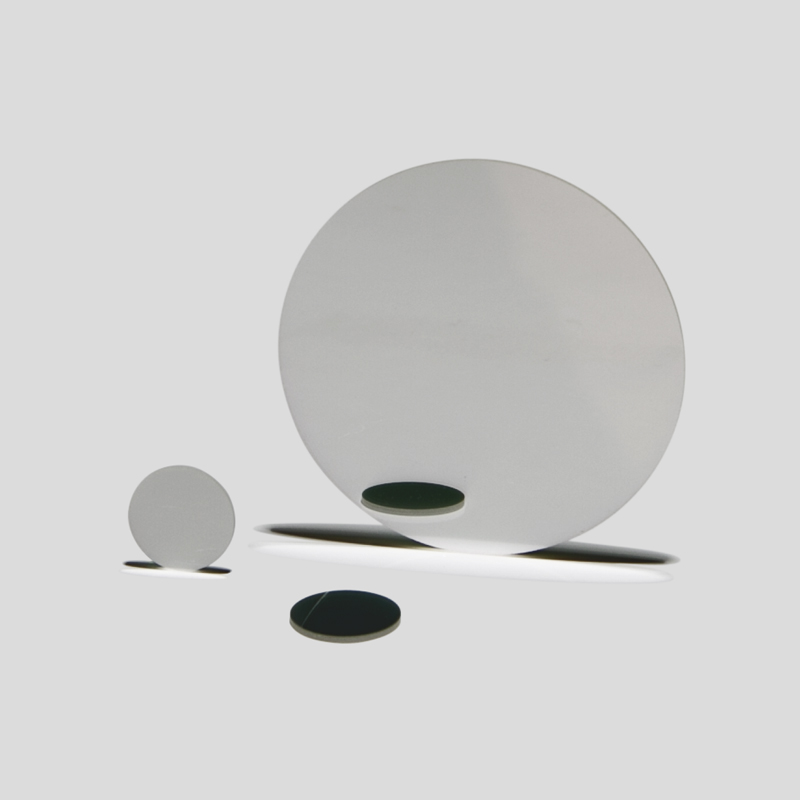As an optical element used to select or suppress light of a specific wavelength to achieve spectral control, the function of an optical filter is related to a variety of application environments, and also includes design parameters. The compliance of the parameters greatly affects the subsequent installation and use of the optical filter. Below we will introduce several common optical filter parameters for your reference.

Optical filter terminology
1.Center wavelength (CWL, Center Wavelength): The wavelength at which the peak transmittance of the filter is generally located in its transmission spectrum, usually in nanometers (nm). The center wavelength is commonly used in the parameters of various bandpass filters, for example: the center wavelength of BP405 is 405nm.
2.Bandwidth (FWHM, Full Width at Half Maximum), the wavelength range of the filter transmission curve at half the peak transmittance, is used to indicate the wavelength selectivity of the filter. The difference between these two points can be used to calculate the bandwidth value. Generally speaking, we divide it into broadband and narrowband according to the size of this value.
3.Cut-off Wavelength: Mostly used in cut-off filters, generally divided into long-wave cut-off and short-wave cut-off. When used for long-wave pass (LP), it is short-wave cut-off, and when used for short-wave pass (SP), it is long-wave cut-off. It is defined as the transition point wavelength where the transmittance drops from high to low.
4.Transmission (Transmission, T): The ratio of a filter to allow light of a specific wavelength to pass, usually expressed as a percentage. High transmittance (such as > 90%) can effectively increase the intensity of optical signals.
5.Optical Density or Cutoff Depth (OD): used to indicate the ability of a filter to block light of a specific wavelength. The formula is: OD = -log (T). For example, OD1 corresponds to a transmittance of 10%, or 0.1, and so on!

6.Slope: indicates the steepness of the transition area between the transmittance area and the cutoff area. A steep slope (high spectral selectivity) helps to separate wavelengths more accurately, and is often used in long-wave filters and short-wave filters to detect their light transition ability.
7.Cutoff Range: used to indicate the cutoff interval of a filter for a specific range. Generally, the minimum and maximum bands will be defined in advance within the filter’s specifications as the effective control cutoff range of the component.
8.dB value: used to indicate the equivalent attenuation capacity of light, used to control the degree of light transmittance, commonly used in neutral density filters, the calculation formula is related to the transmittance, D = -10 * log10(T), when the transmittance T = 0.001, that is, 0.1%, we substitute it into the formula, and get D = -10 * log10(0.001), and get D ≈ -10 * (-3), that is, D = 30 dB, so in practical applications we can determine the attenuation capacity of the filter to light by the db value.
9.Angle Sensitivity: The sensitivity of the filter’s transmission characteristics to changes in the angle of the incident light. Multilayer interference filters are usually more sensitive to angle changes.
10.Optical Surface Quality: The surface finish of the filter is a parameter that describes the maximum allowable size and quantity (number) of surface defects on the effective light transmission area of optical parts. The finish is usually expressed in numerical values, such as the common 60-40/40-20.

Analysis of the main parameters of optical filters
Spectral range
The wavelength range covered by the filter, such as ultraviolet (UV), visible light (VIS) or infrared (IR) bands.
Environmental adaptability
Including temperature resistance, humidity stability and radiation resistance, which determines the service life of the filter in harsh environments.
Passband flatness
Describes whether the transmittance in the filter transmission area is uniform. A flat passband can reduce spectral distortion.
Filter substrate
Quartz, optical glass or other materials are usually used as substrates. Different substrates affect the transmission efficiency and mechanical properties of the filter.
Back reflection suppression
Reduce the reflection interference of light that is not completely transmitted or absorbed on the back of the filter, usually by coating anti-reflection (AR) film.
By understanding these terms and parameters, you can more efficiently select optical filters suitable for specific applications. If you need to further refine the application analysis, you can discuss it at any time!







